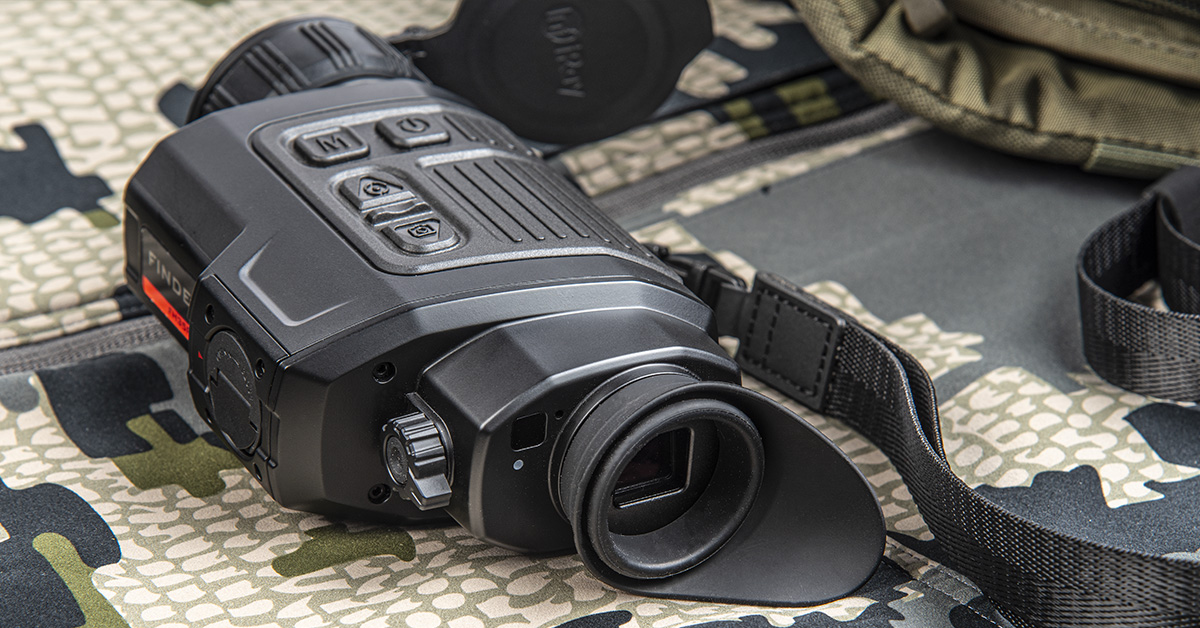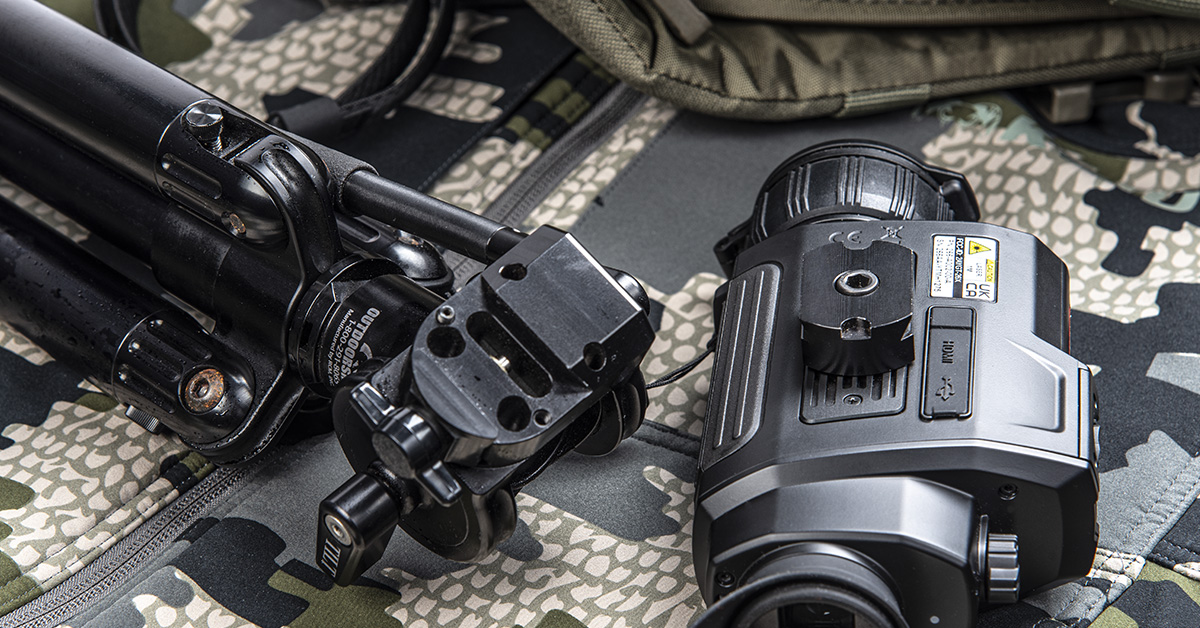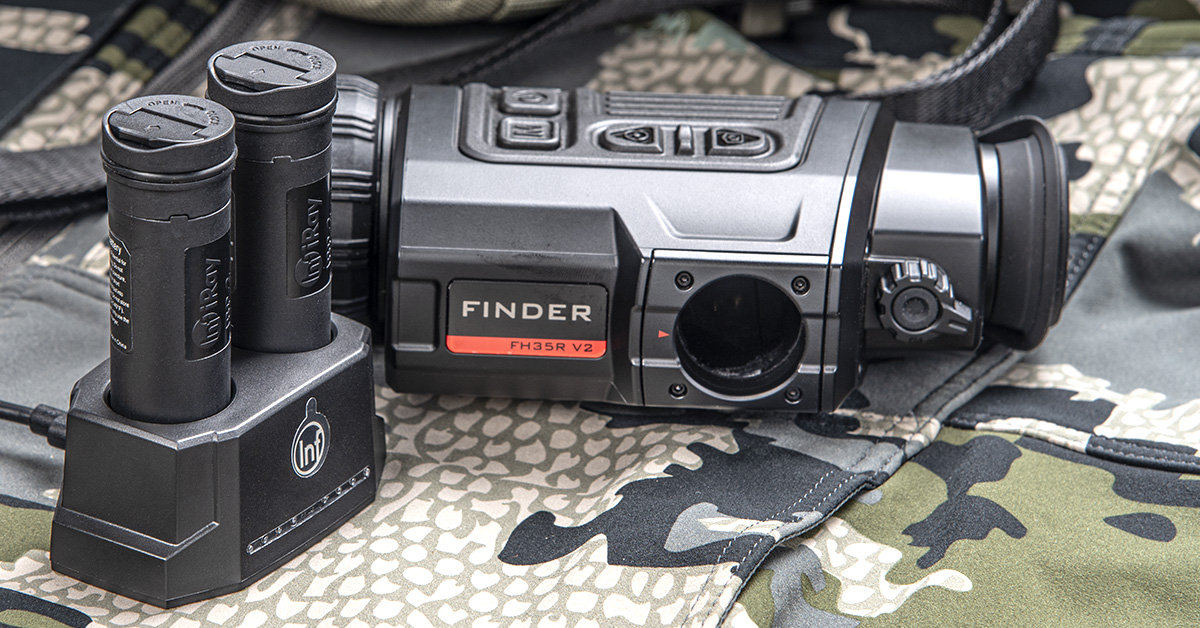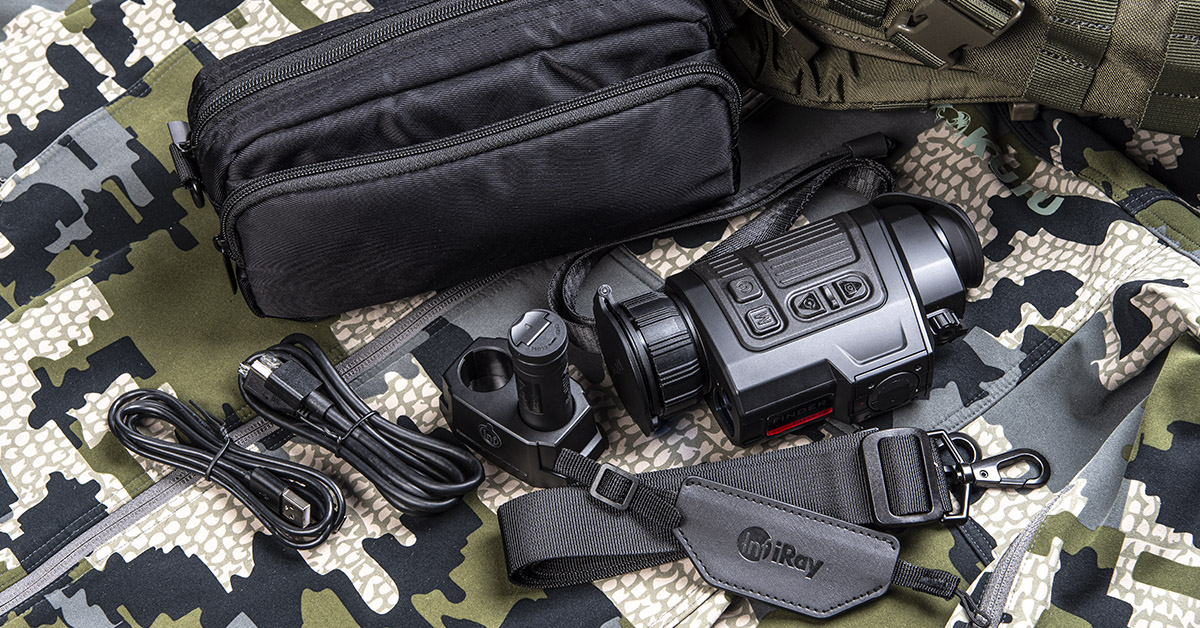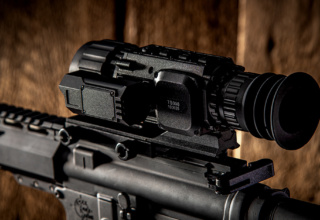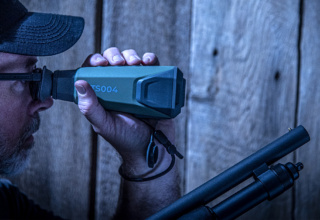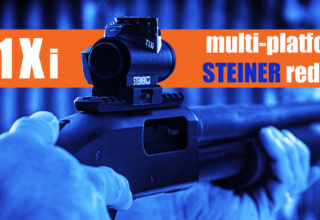Hunting, tracking, and wildlife observation…yes, but home and property defense as well? You bet! The all-new InfiRay Finder V2 is a multi-function thermal imager with more applications than you might imagine.
by Rob Reaser
There is no longer any question about it.
Thermal is the thing.
And there are some seriously good reasons for this, especially in comparison to night vision optics. This applies across the board — whether your application is hunting, defense, wildlife observation, or whatever reason you may need to pierce the darkness or go beyond the capabilities of natural, reflected-light vision.
Until recently, my experience with thermal imaging has been limited to firearm optics for night hunting…varmints, of course. But after spending the last several months testing the newest Finder-series thermal imaging monocular from InfiRay Outdoor, I’ve come away not only mightily impressed with the product, but I also have a better appreciation for what a handheld thermal imaging system can deliver outside of the hunting arena.
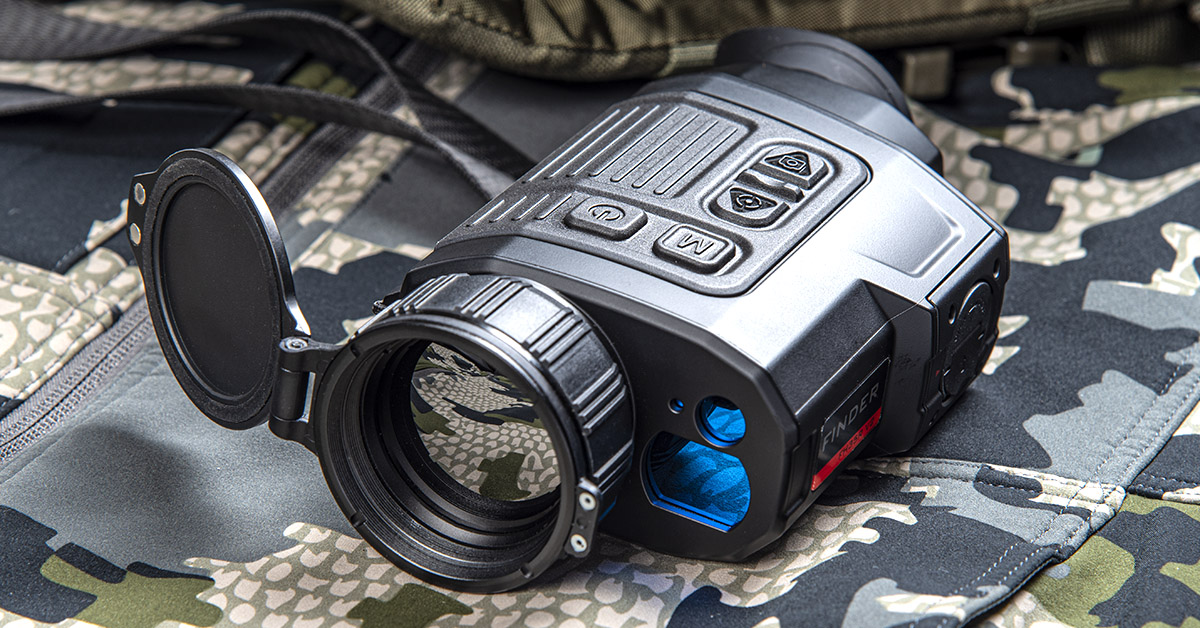
How so? Quite simply, a highly portable thermal imaging unit is the ultimate tool for locating things that don’t want to be located…day or night. In short, unless someone is sporting an as-yet-unproven thermal camouflage technology, there’s not much that can be done to prevent detection by a thermal imaging unit in the hands of a determined seeker. In other words, you ain’t hiding from thermal.
That is pretty potent technology to be available on the street, when you think about it.
I live in a rural area where law enforcement response times are measured by the half-hour, not minutes, and that is if you are lucky. I have neighbors running farms, with outbuildings and barns that are ripe for plundering ne’er-do-wells to hit in the dark hours. Sure, when the dogs catch a whiff of something they don’t like, I could always grab a spotlight and check it out. That means I give my position away and let the baddie know it’s time to beat it. Neither will result in a crook heading to the clink. I could grab my rifle with the thermal optic to scan the night, but that is awkward and presents all sorts of problems, not the least of which is covering unintended targets with the muzzle of a loaded firearm.
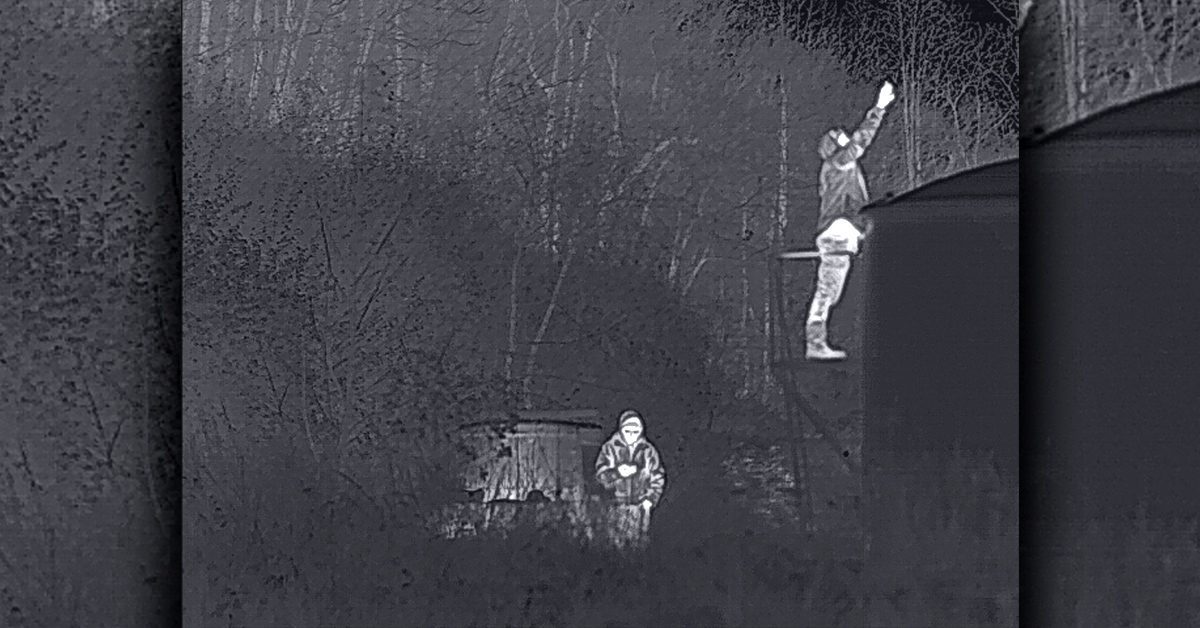
A handheld thermal, I have learned, solves so many problems. From a concealed vantage point, you can observe your property and easily identify anything that is out of place or that shouldn’t be there. Dark shadows offer no security from thermal imaging. Even someone hiding behind bushes is no match for a good thermal unit. And this ability to find what might be hiding from you extends to daylight hours as well because thermal imaging works just as effectively in bright sunlight as it does in the darkest depths of a moonless, overcast night.
What is Thermal Imaging?
Whether we have personally used it or our experience is limited only to what we’ve observed in a good action flick, night vision is the legacy gear used to see what’s up when the sun has gone down. This technology relies on enhancing the scant available light that is always present, even after dark. It is good stuff, no question about it, but it has its limitations, the most damning of which is that it does not work in daylight.
Thermal imaging is absolutely fascinating stuff to my mind. It works by detecting the smallest of variations in radiated heat — as little as 0.01° C, or 0.018° F. Everything in our environment radiates heat to some degree. A thermal imager can detect these heat variations and transform that information into a digital image that you observe through the unit’s eyepiece.
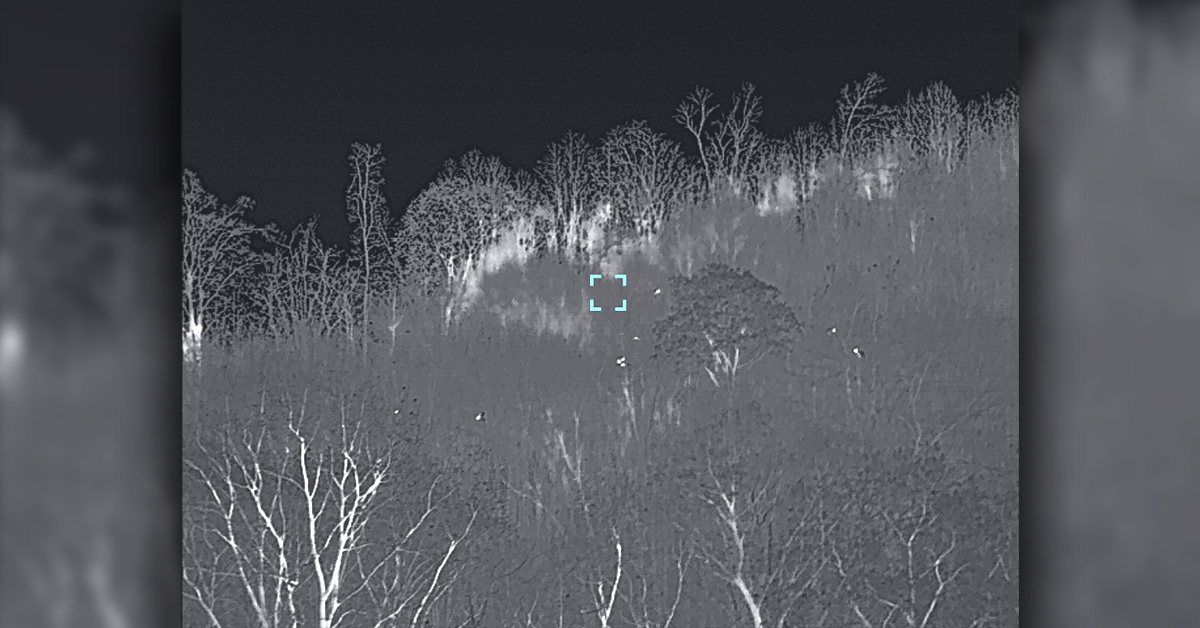
On one of the first nights I tested the InfiRay Finder V2 monocular, I scanned the side of the mountain in front of my house and spotted several white hot dots in the treetops. Those were turkeys on the roost at around 350 yards distance. That kind of blew my mind to think that this unit was so sensitive that it could detect the heat radiating from those birds from that far away. Wow!
As mentioned, thermal imaging works the same in the daytime as it does at night. That is because it detects and converts the radiant heat signature into a digital image rather than amplify visible light like night vision systems. So, where animals — two-legged or four — might not be visible during the day because they are camouflaged in the environment, thermal imaging can help identify them via their heat signature.
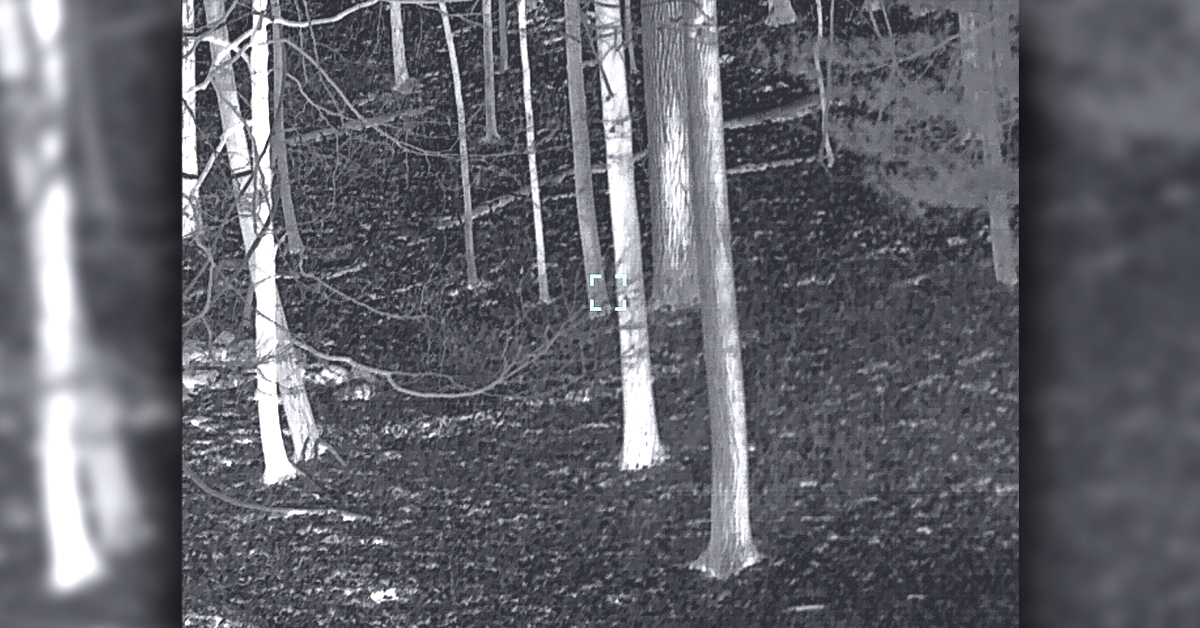
Thermal Applications
The value of a thermal imaging riflescope is obvious for after-dark hunting applications, such as varmint hunting. A handheld thermal unit, though, significantly expands your capabilities.
Hunting – My clip-on thermal unit works great for varmint hunting. The downside is that I’m hesitant to take it off the scope for fear of losing my zero (the OCD in me), so scanning fields for incoming coyotes means setting the gun on a swivel-head bipod (a pain) or scanning with the gun mounted in my shoulder (a bigger pain!). An accompanying handheld unit, on the other hand, lets me keep my rifle ready for engagement while I scan the fields comfortably and quickly.
Tracking – With many decades of hunting under my belt, I’ve engaged in more than my share of tracking jobs, some of which proved downright brutal and spanned more than a day. Usually, the circumstances of the hit resulted in little blood to track, with the toughest searches being due to the animal passing through stretches of grass, which experienced hunters know presents the biggest tracking challenge when the blood trail is sparse. In these situations, a thermal unit is a huge advantage in locating downed game because you can “scout ahead” to cover broad swaths of ground and see the animal whereas a blood trail may or may not get you to it.
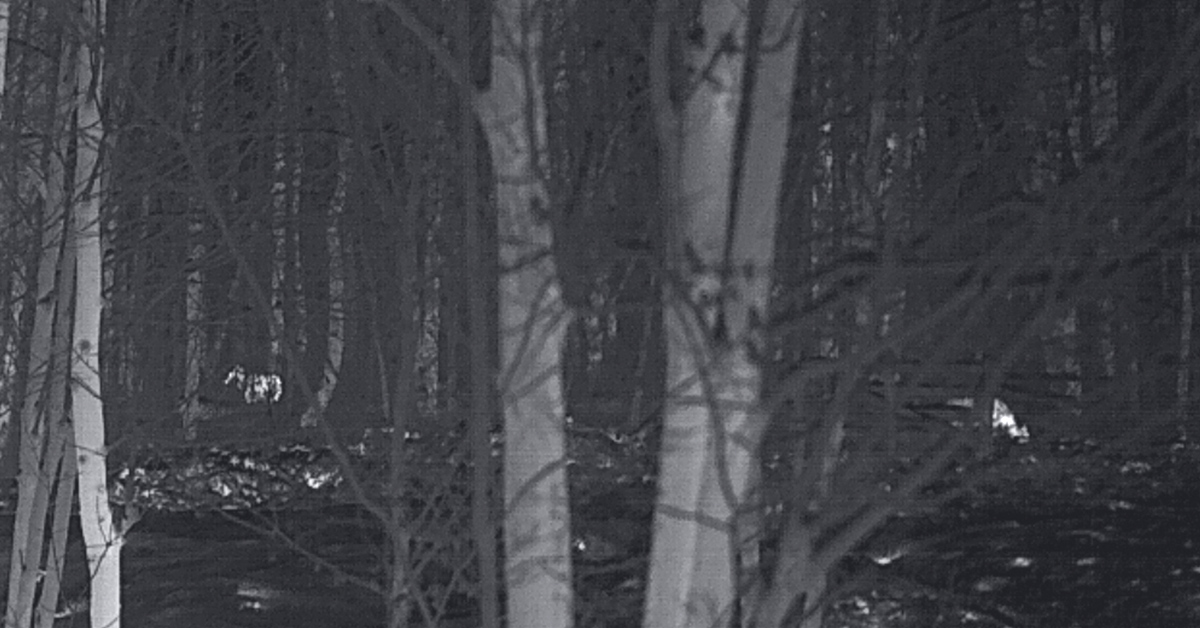
Observation – Thermal imaging offers many benefits for wildlife observation after dark, obviously, but one of the big benefits during the daytime hours is locating otherwise concealed animals so they can then be observed with traditional optics. This value is also realized for those hunting big game in open country.
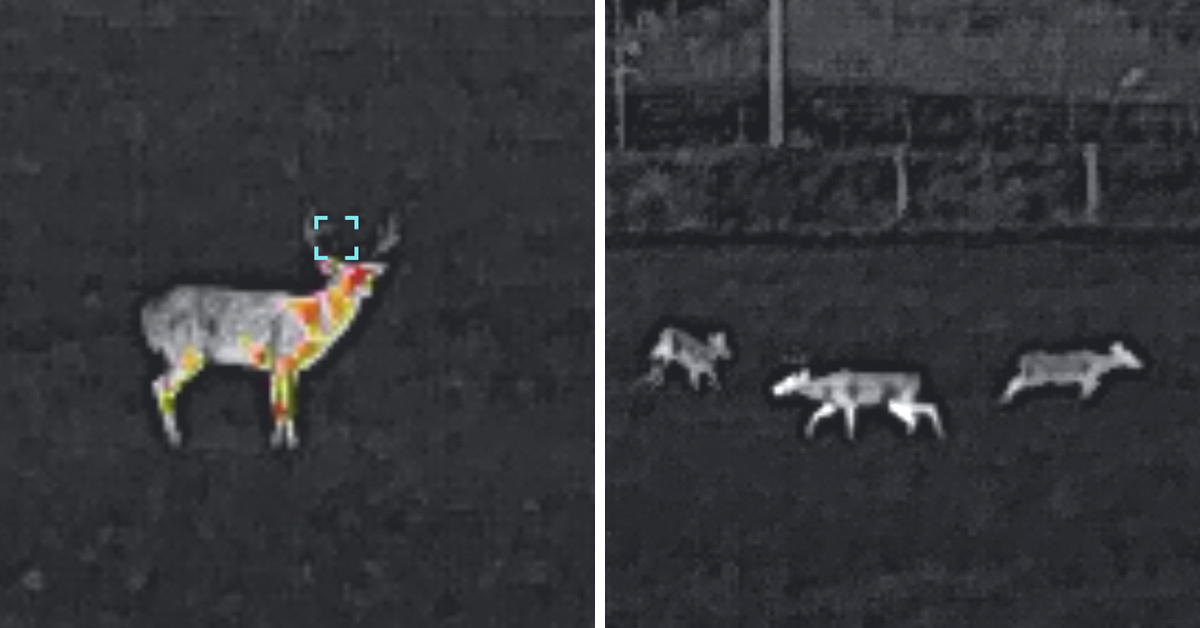
I had the most fun…and the most aggravation…with the Finder V2 this past hunting season as I unsuccessfully pursued the whitetail in the above photos. He showed up on camera behind the house beginning in mid-September, and I worked him hard every evening I could get into my bow stand through the end of December. One evening in early November, I got back to the house after dark, put up my gear and let the dogs out. They immediately raised a ruckus, so I grabbed the Finder to see what was up…and there he was, coming off the hill not 15 minutes behind me and walking right by my shop. Over the next couple of weeks, this pattern would repeat. He would come off the hill and head into the pasture where all the does would be feeding and devil them silly in his testosterone-fueled lust. The Finder gave me a front-row seat to all his shenanigans but, alas, I could never meet him on the battlefield during daylight hours.
Homestead Protection – Thermal imaging represents one of the great leaps forward in defense and protection technology. While the nature of digital imaging/resolution via small OLED screens doesn’t offer the optical clarity of contemporary night vision, which is optical-based, it does offer several advantages as previously noted. Most importantly, thermal imaging can detect subjects that would otherwise be hidden or obscured with night vision. Firefighters often employ thermal imaging to detect people within smoke-filled rooms, for example — something that night vision cannot do. Police can use thermal to find subjects who may be hiding behind foliage or in the deep recesses of a dark building.
While these professional uses of thermal are welcome, they also apply to homeowners, ranchers, or anyone who has an active need for home and property protection.
The InfiRay Finder V2
I always approach “new” tech with a bit of hesitancy because I’m not exactly comfortable with it…and it always seems to bite me. More times than not, I get fist-through-the-wall mad whenever I must set up some online account because something always goes wrong. It’s my curse. When the Finder V2 arrived, I couldn’t help but feel a bit of anxiety, figuring that it would be replete with a menu system guaranteed to cause me aggravation.
Boy, was I wrong.
Yes, this unit has an extensive menu that provides the user with all manner of customizable adjustments, but just a little time spent with the owner’s manual and learning the navigation puts all fears to rest.
Four soft-touch buttons provide all the tools needed to set up the system for the kind of imaging you want. There is a power button, menu button, an up/ranging button, and a down/photo button. With these, you can set the Finder V2 just the way you want it and adjust the operation quickly while it is in use.
The functions that will get the most use are those designed to enhance imaging dependent upon your situational needs. These include altering the color palette between six different modes, adjusting the display brightness, image sharpness/contrast, and working the digital zoom. The other key functions include still and video image recording and laser rangefinding. Again, after a quick orientation courtesy of the manual, you can work through these options with no hiccups.
A 32G internal memory supports photo and video capturing. A quick press of the down/camera button snaps a photo; long-press the button to start video recording. All imaging can be directly downloaded through the supplied USB cable or via Wi-Fi through the InfiRay Outdoor app. The app also allows you to control the unit wirelessly — a great option when observing with the Finder V2 mounted to a tripod.
The Finder V2 is, of course, tripod-compatible. Simply install your tripod adapter to the bottom of the unit and you’re good to go.
Power for the Finder V2 comes courtesy of a 4.2V lithium-ion rechargeable battery pack. Two batteries and a charger are included, with each battery having an operational run time of up to 11 hours. The battery pack comes with a flip-up tab and inserts into the left side of the housing. Just push and twist for a solid installation. An O-ring keeps moisture out. Speaking of moisture, the Finder V2 boasts an IP67 waterproof and dustproof rating, so you don’t have to worry about hard use in poor weather conditions.
The Finder V2 comes in a convenient kit form with everything stowed in a padded, dual-compartment zippered pouch. This includes the thermal unit, batteries and charger, USB cable, HDMI cable, hand strap, carry strap, and a removable pouch strap.
As the name implies, the Finder V2 is the second-generation thermal monocular of the series from InfiRay Outdoor. This new version takes the already proven Finder system and upgrades it with a higher-sensitivity thermal sensor for sub-20mK NETD performance and a larger F 0.9 aperture to enhance radiation acquisition.
MSRP for the Finder V2 is $2,499, which is a solid value for such a capable and diverse thermal unit that can serve a broad range of functions in the hunting fields and on the home front.
InfiRay Outdoor Finder V2 FH35R Specifications
- Resolution, Pixel: 640×512
- Pixel Size, μm: 12
- NETD: ≤20 mK
- Frame Rate: 50Hz
- Objective Lens: 35mm / F 0.9
- Field of View (HxV): 10.5°x7.9°
- Magnification: 2~8
- Diopter: -5~+5
- Detection Range: 1,750 yds.
- Display Type: AMOLED
- Display Resolution: 1024×768 px
- Battery Type: replaceable Li-ion battery pack
- Max. Battery Life (22℃) *, h: 5.5hx2
- Laser Rangefinder Range: 800 m ±1
- IP Rating: IP67
- Interface: Type C
- Mic: yes
- Auto Display OFF: yes
- Memory: 32G
- Wi-Fi & App: yes
- Weight: < 400g
- Dimensions: 160×90×50 mm
- MSRP: $2,499

